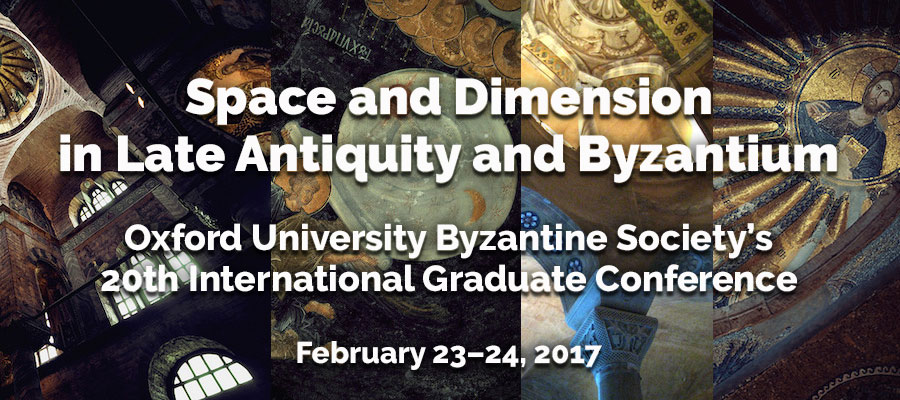Space and Dimension in Late Antiquity and Byzantium, Oxford University Byzantine Society’s 20th International Graduate Conference, Oxford, February 23–24, 2017
Whether we are examining the political and military control of vast territories, the creation and maintenance of authority, the ritual surrounding religious practice, or the establishment of social relationships and hierarchies, all reflected through a rich artistic and literary culture, it is clear: space mattered in the Late Antique and Byzantine world.
However, the inclusion of space in scholarship pertaining to Late Antiquity and Byzantium is still too often the exception rather than the rule, especially in works that do not primarily concern archaeology or art history. Accordingly, this conference will offer a platform for interdisciplinary discussion on the role of space and dimension in scholarly debate, and how its inclusion will change – or not – our understanding of the Late Antique and Byzantine world.
Postgraduate students are invited to engage with various interpretations of ‘space’ and ‘dimension’, in all fields of Late Antique and Byzantine history: including history, archaeology, history of art, theology, literature, and philology. Abstracts from scholars working on the so-called ‘peripheries’ of the Late Antique and Byzantine world are strongly encouraged, particularly those whose research intersects with African and Asian history, as are those from scholars working in Islamic and Jewish Studies.
Topics may include:
- Space, dimension and other forms of perspective in artistic, manuscript, and literary sources.
- Closeness and distance and their effects on the circulation of textual and intellectual culture.
- The form and use of space in public and private buildings; perceptions of and attitudes towards open and closed spaces.
- The use of space in ritual, whether religious or secular; space and authority.
- The impact of space and dimension on political and military considerations.
- The control of movement and access; segregation; real and imagined barriers; binaries and their transgression.
- The role of space in interpersonal relationships; gendered space.
- Attitudes to distance and travel; perceptions of the landscape.
- Space in monastic and ascetic life.
- Attitudes towards the body and embodied experience.
- Perception of the invisible; alternate worlds and dimensions; the afterlife.
